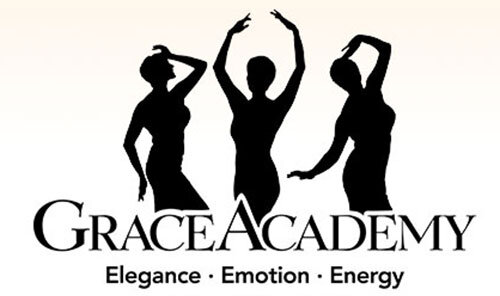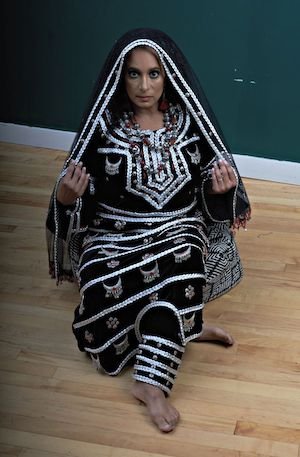Dancer Origin Stories – Oreet
In this edition of Dancer Origin Stories, I’m thrilled to feature Oreet. Currently based in Philadelphia, PA (USA), Oreet is a powerful dancer, both physically and emotionally. She has won numerous awards—but more importantly, she will make you feel.
One of my first conversations with Oreet was at an event we both attended, during the creation process for my first DVD. She generously offered insights gained from her experience producing her SharQui belly dance fitness videos, which were so helpful. Her desire to “remind women and men that they are already beautiful, strong and that they CAN do it, dammit!” is most admirable, both in intention and execution.
Let’s dig into Oreet’s Origin Story…
Q. What is your first memory of dance?
A. My first memory of dance is dancing Yemenite folk with my family growing up as well as watching bellydance at celebratory events. But the moment I knew that I wanted to become a dancer was when I saw American Ballet Theater’s, The Nutcracker, in NYC at the age of 6.
Q. Was social dance or music a part of your life growing up? If so, how?
A. Oh yes! Bellydance, Israeli folk dance and Yemenite folk dance was a staple at Israeli parties. Along with these cultural dances I also studied tap, ballet and jazz from age 6-18. It was my escape as a child and I loved it! I especially loved and still love the thrill of performing.
As far as music, we always had Israeli music playing in the house. I was also trained in classical piano from the ages 7-16 and even did local competitions. Knowing music has really helped how I hear music for choreography and has helped me in being co-creator of my SharQui Bellydance Club Mix Cd’s.
Q. How did you first encounter belly dance?
A. The first time I saw bellydance was at a party in Israel at the age of 5 and loved it! I loved the coins, the sparkle, the zills and the beauty!
Q. What phase of life were you in when you took your very first dance class?
A. I started commercial dance at 6 years old but socially did bellydance inspired moves and folk dance right from the start. My very first formal, bellydance class was in NYC. It was so nice to see so many people interested in this art-from that I grew up with. I felt very proud.
Q. Many dancers took classes when they were little, but then returned to dance as adults. Was this the case for you?
A. Not the case for me. Dance has always been my career from the beginning. After taking dance classes at my local dance studio until the age of 18, I continued into college with modern dance; received my BFA in Dance and Performance; then moved back to NYC to grow my career as a contemporary dancer for 10 years.
Q. What (people/phase of life/experience) led to you becoming serious about your dance studies?
A. Once I saw my first professional, ballet performance, I knew that I wanted to dance.
But what led to me becoming seriousness about dance as a career was at a summer dance intensive. At 16 I was accepted to be part of a summer dance intensive in NY that offered the experience of studying, dancing and auditioning in NYC. The workshops were taught by famous NYC choreographers and included classes such as Broadway style dance, ballet, jazz, acting, singing, as well as mock auditions.
Well, at one of the mock auditions I lasted to the end and the choreographer said, “You are too short for the part but you are an amazing dancer. Here’s the number of my friend who’s choreographing a show that needs someone your height!” That’s all I needed to hear.
Q. What allowed you to become serious about belly dance?
A. I fell back into bellydance and became serious about it when I wasn’t “fitting the part” in contemporary and commercial dance in NYC. When I grew up, I remembered that there was no judgement when it came to bellydance.
I was also supplementing my living with teaching fitness at that time and it was my director at Golds Gym asked if we could think about interesting fitness formats to teach, and I immediately thought of bellydance fitness.
That was 1998, it’s now 2022 - and I have been doing it ever since. Of course, in between this time I have studied extensively with people of origin and non-origin and have competed in several bellydance competitions.
Q. How do other forms you have studied influence your belly dancing?
A. They have influenced my lines, posture, turns, and even ideas for movement.
The most important thing is that these other forms have given me the strength to do bellydance.
Q. Tell me about one of your most influential teachers.
A: When it comes to dance, my most influential teachers have had a very diverse background in dance and have studied music. Although I am a dancer of origin, I am very progressive. I love evolving art and really appreciate a new spin on things. So, I try to take classes from teachers who can fulfill this for me.
When it comes to teaching, my most influential teachers really had a grasp on time management. This means getting their point across poignantly, watching and correcting, minimal talking and always moving, all within a 60-90-minute class. These types of teachers have really influenced me in my teaching as this time management flow really gives value to the student which helps in student retention.
Q. Share the memory of learning a movement that came easily to you…
A. Undulations and twists! I’ve been doing them ever since I can remember
Q. … and a movement that you had to work hard to master.
A. Oh gosh…belly rolls. Still have not mastered them. I don’t think my body ever will. I’ve accepted it. Screw it…onward and upward!
Q. Tell me about one “ah hah” moment that you recall, whether technical, emotional, or conceptual.
A: So, when I was a competitive bellydancer I hired an acting coach, not a bellydance coach, to mentor me. I really wanted to stand out on a big stage, as I am only 4 feet 10 inches tall.
My coach told me to perform as if I am teaching the audience my piece. Use your eyes to teach and make your movement bigger so that a beginner student really sees and understands what you are doing. Holy crap, from then on, my dancing changed. I teach this concept to my students now.
Q. What dance skills translate to your everyday life?
A. How I use my core and legs. Specifically, when lifting and playing with my 2 kids. Kids are a workout!
Q. What everyday skills translate to your dance life?
A. My administrative and speaking skills!
Q. What else would you like to add?
A. I would love for people to understand the diversity of the Middle East and North Africa. There are so many beautiful cultures and religions in these parts of the world and I feel that many dancers have a very narrow view.
I am Jewish. I am of Yemeni Heritage. I am Israeli. Yes, bellydance is part of Jewish culture.
Q. What do you currently have in progress?
A. I just launched the SharQui instructor Academy. It’s a 12-week training that gives you all the tools you need to teach SharQui Workout and business. This Academy is really hands on. We help instructors learn how to teach, give them the tools to start their business and grow it.
I am so proud of it. Go to https://www.sharqui.com/teach/ for more info.








